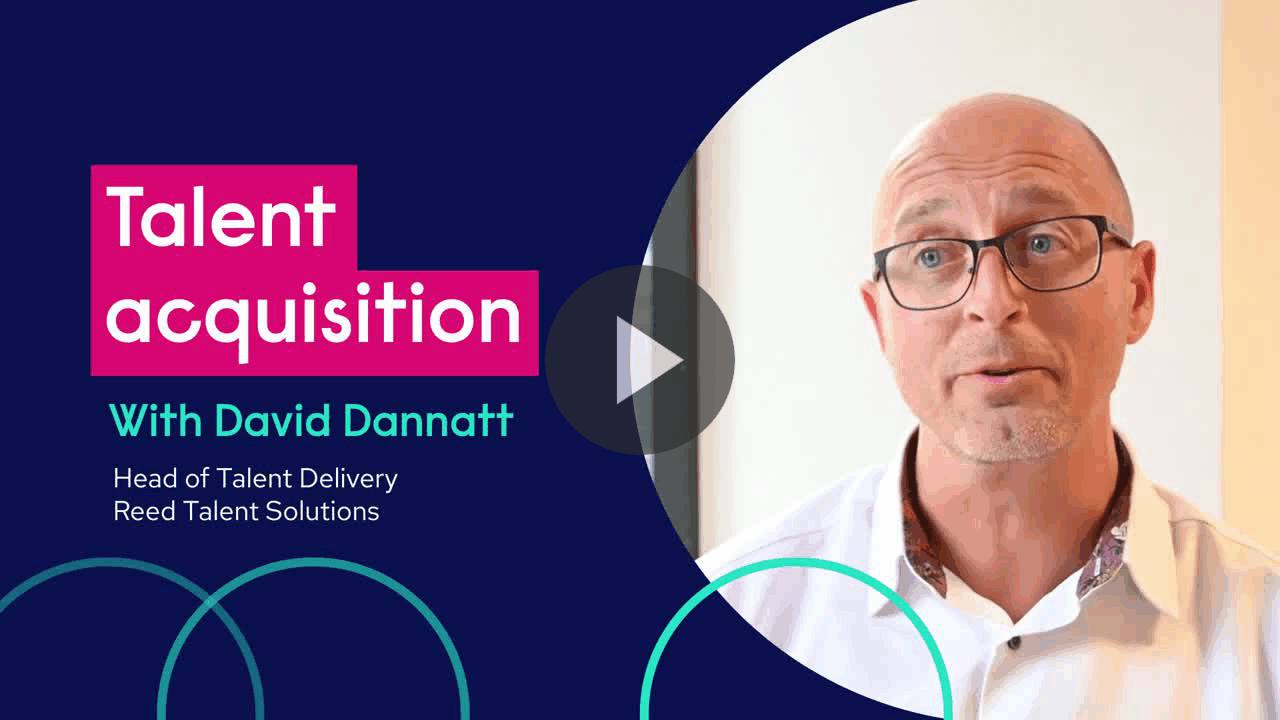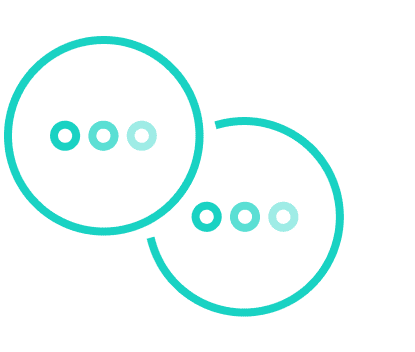A robust talent acquisition strategy requires a proactive approach to hiring, seeing recruitment as an opportunity rather than simply a necessity.
People are your most important asset, so fine tuning the systems you use to bring them into your organisation, and to retain them, should be a high priority for any business.
By planning ahead and nurturing potential employees, you will be able to hire the best people when you need them. Talent acquisition takes a more strategic approach to filling vacancies, so futureproofing that process is a surefire way to ensure a successful future for your organisation.
In this article, our Head of Talent Delivery, David Dannatt, reveals how trends such as the increase of artificial intelligence (AI) and recruit, train, deploy programmes will be at the forefront of future talent acquisition strategies.

Q: How do you believe talent acquisition strategy will evolve in the next two years?
A: We’ve had a period with the cost-of-living crisis and a real scarcity of resources, and it feels like the markets are definitely moving now to have a real focus on looking at untapped demographics, untapped markets.
There's always been a drive to try and improve diversity in the workforce, but right now it feels like there's some real movement in that regard to move things forward.
In terms of hybrid working, that's here to stay. People need to put that at the core of what they do and make sure their EVP (employee value proposition) is built around that. That's what people want. That seems to be what organisations want - to make sure that the strategy aligns to hybrid working.
And I think, finally, there’s internal mobility. There is a skills gap. You've got a workforce that you can engage by upskilling and driving that internal mobility, and I think that's going to be a big focus over the next couple of years in terms of talent acquisition strategy.
Q: How does organisational design affect talent acquisition strategy, particularly as organisations look to achieve balance and flexibility by having the right mix of permanent and contingent workers and consultancy?
A: Organisational design and talent acquisition strategy go hand-in-hand. In terms of getting the mix right, that's more of a challenge so you have to look at your core repeatable business, you have to have your forecasting right, and you have to look at internal or external market factors that can impact those things.
If you look at a call centre as an example, you'd have your baseline of calls that you receive year in, year out - that would be your permanent hires - and you'd have your peaks and activity, you might have a Christmas peak, there might be something that happens in your marketplace that requires a temporary workforce.
And then you might have something like a project that comes in, such as replacing your IT equipment, an EVP project to look at what you're taking to market, or a short-term piece of business that you want to fully outsource - and that would be your consultancy placements.
Q: How can organisations ensure they futureproof their talent acquisition strategy so they can adapt to the ever-changing labour market?
A: There are a few simple things that can be done. Make sure that your organisational designs match your future and current talent needs, and that your talent acquisition strategy matches that, and that you go into the broadest talent pools that you can.
Removing barriers and preskilling where required is also important. I think that your EVP really needs to stack up and be authentic in the marketplace.
If you follow those basic principles, that will make you an employer of choice and make it easier to you to recruit in times of positive and challenging labour markets.
Q: How can talent acquisition leaders leverage technology to source, attract, and engage talent in a remote and digital world?
A: For sourcing, it is fantastic. I think it can help you uncover candidates that you might have missed through traditional database searches. There is a lot of artificial intelligence supported technology that can help you get to those candidates more quickly and to uncover candidates that you wouldn't necessarily have seen.
You've got automation and scheduling of interviews, of conversations, to help you find mutually convenient time to interact with that talent. And then ultimately, you've got chatbots that give you 24/7 availability so people can come to you when it suits them.
Q: What are the key skills and competencies that talent acquisition professionals need to develop or enhance to succeed in the future of work?
A: When I look at my team, I think the two most important things for me are communication skills and organisational skills. You're the first point of physical contact with an organisation, so it is really important that you do what you say you're going to do, when you say you're going to do it.
After that, being an expert in your marketplace and doing your research, really understanding and presenting yourself as a professional in that space. And then finally, I think embracing the technology. There is lots of recruitment technology out there. There's probably more to come. Making sure that you understand and embrace that technology to enhance the service you provide is vital.
Q: What are the best practices and strategies for creating a positive and inclusive candidate experience that reflects the company’s culture and values?
A: You have to start with education and continually evolve your strategy. If I look at the candidate experience now compared to what it was 20 years ago, it's very different and will continue to evolve as we move forward.
Where you can have a diverse group of people that you can involve in that candidate experience, and lived experience, is fantastic. Education is great, lived experience is better. If someone's been through that, they are probably going to be able to really support you and uncover things you might not have thought of when creating that candidate experience.
You've got technology, lots of technology out there that will support you in terms of making sure that experience is inclusive and diverse and reflects your company. Lots of it is free. You’ve got tools like gender decoders to check and test what you've done is correct.
Removing barriers to application is vital. Rigid processes create fewer applications and could potentially be restricting people applying for your roles that are really good for you, that you're missing out on. Taking away as many of those barriers, be it being on the end of the phone to someone, allowing paper applications, allow people to come in and see you if you need to, all of that will help with customer experience.
Then, looking at the sources that you're going to market for and making sure that's as wide as possible. For example, we had a contact centre that we supported recently. They were looking to increase their age and gender demographics and we saw real success from engaging with the Jobcentre, which was not something that we've done for quite some time.
It's just making sure you're thinking about where you're going to market and what experience you can provide to those candidates.
Q: How can talent acquisition teams measure and improve their performance and impact on the business’ outcomes?
A: It's a continual review process. You need to look at the upfront work that you did. Did you remove those barriers? Did you go to market in the widest source that you could have done? And ultimately, did you get the right people at the right volume in the right time frame? That’s always probably the most important metric in terms of the basic need of a talent acquisition team.
Once the candidates have started, it’s about taking the opportunity then to ask them whether journey reflected what they've come to - did the journey reflect the business?
When people leave the business, it’s about conducting those exit interviews and asking how people feel about your employee value proposition - does it all stack up?
And then making sure you use that data. As you move forward, you need to continually review those processes. You need to feed it back in and ensure all that data that you're capturing is being fed back into processes.
To find out how you can futureproof your organisation’s talent acquisition strategy, speak to one of our experts.





